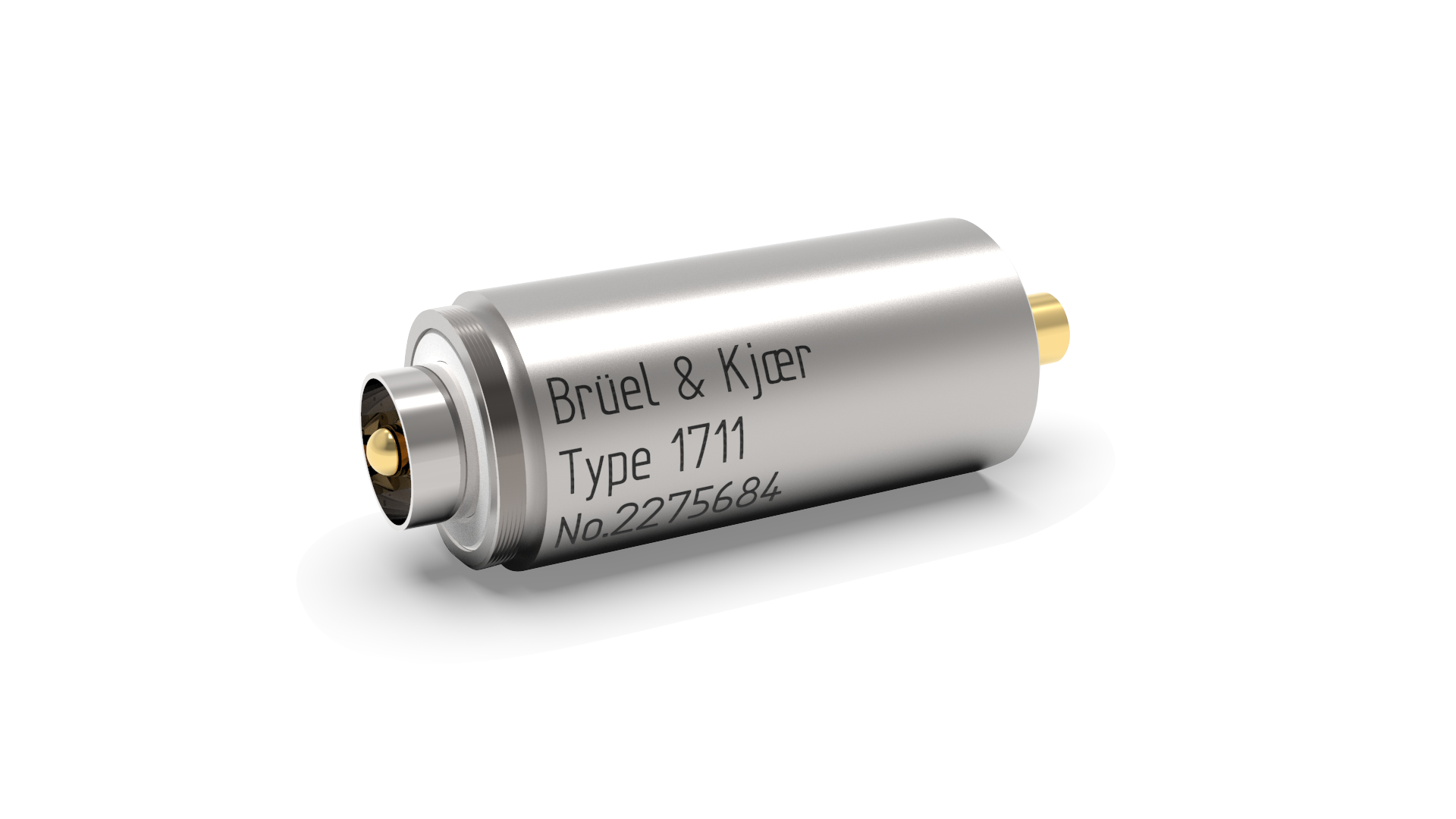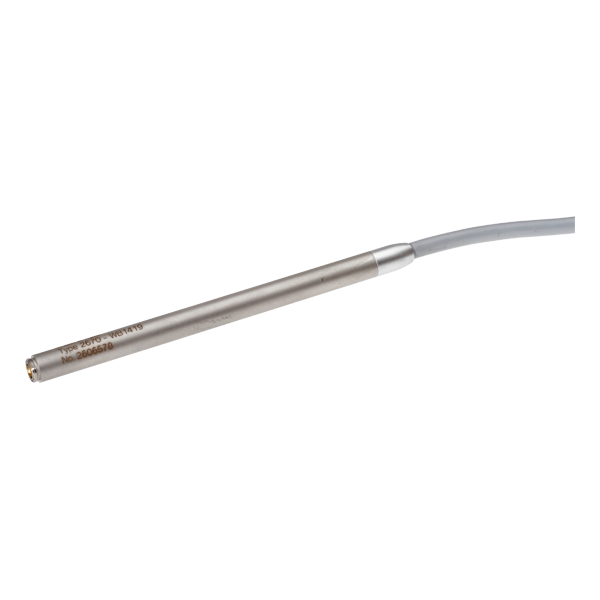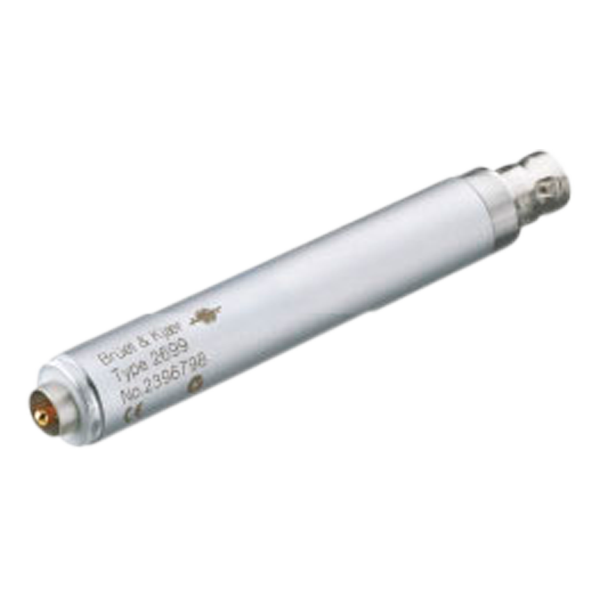Préamplificateurs de microphone
Les préamplificateurs de microphones Brüel & Kjaer offrent une grande robustesse et des performances acoustiques adaptées à diverses conditions d'utilisation. Les capacités en sortie élevées de nos préamplificateurs permettent un fonctionnement avec de très grandes longueurs de câbles, sans dégradation du signal, y compris lors de niveaux de pression acoustique et de fréquences élevés. Les préamplificateurs CCLD et les préamplificateurs traditionnels de Brüel & Kjaer sont disponibles en versions 1/2 pouce et 1/4 pouce, compatibles avec les dimensions standard des capsules microphoniques les plus utilisées.
What is a Preamplifier-
TYPE 1706
Préamplificateur de microphone CCLD haute température
Conçu pour effectuer des mesures acoustiques à des températures allant jusqu'à 125 ° C (257 ° F) avec un module d'entrée CCLD (ligne à courant constant).
- Optimised for : CCLD
- Connector at preamplifier : BNC
- Polarization voltage support : No
- Frequency range : <minmax min="20" max="50000" />
- Attenuation : -0.35
-
TYPE 1711
Préamplificateur de microphone CCLD court ½ pouce
Permet la réalisation de mesures acoustiques en espaces confinés.
- Optimised for : Measuring in confined space
- Connector at preamplifier : SMB
- Polarization voltage support :
- Frequency range : 20 to 20000
- Attenuation : 0.2 dB (typical)
-
TYPE 2669-B
Préamplificateur de microphone ½ pouce, effilé, avec câble AO-0428, connecteur Brüel & Kjær
Conçu pour fonctionner dans une large gamme de températures, d'humidité et d'autres conditions environnementales.
- Optimised for : Acoustical
- Connector at preamplifier : LEMO 0B, 7-pin
- Polarization voltage support : Yes
- Frequency range : 3 to 200000
- Attenuation : < 0.35
-
TYPE 2669-C
Préamplificateur microphone ½ pouce, cylindrique, connecteur LEMO 1B, sans câble
Conçu pour fonctionner dans une large gamme de températures, d'humidité et d'autres conditions environnementales
- Optimised for : Cylindrical
- Connector at preamplifier : LEMO 1B, 7-pin
- Polarization voltage support : Yes
- Frequency range : 3 to 200000
- Attenuation : < 0.35
-
TYPE 2669-L
Préamplificateur de microphone ½ pouce, conique, incl. câble, connecteur LEMO 7 broches
Ce préamplificateur de microphone ½ "fonctionne sur une large plage de températures, d'humidité et d'autres conditions environnementales.
- Optimised for : Acoustical
- Connector at preamplifier : LEMO 0B, 7-pin
- Polarization voltage support : Yes
- Frequency range : 3 to 200000
- Attenuation : < 0.35
-
TYPE 2670
Préamplificateur microphone ¼ de pouce, câble intégré de 2 m avec prise LEMO à 7 broches
Conçu pour fonctionner dans une large gamme de températures, d'humidité et d'autres conditions environnementales.
- Optimised for : Phase
- Connector at preamplifier : Fixed (2 m)
- Polarization voltage support : Yes
- Frequency range : 15 to 200000
- Attenuation : <0.4
-
TYPE 2670-WB-1419
Préamplificateur microphone ¼ de pouce, câble intégré de 2 m avec prise LEMO à 7 broches
Conçu pour fonctionner dans une large gamme de températures, d'humidité et d'autres conditions environnementales. Optimisé pour les mesures d'airbag.
- Optimised for : Airbag
- Connector at preamplifier : Fixed (2 m)
- Polarization voltage support : Yes
- Frequency range : 1 to 100000
- Attenuation : 11
-
TYPE 2671
Préamplificateur de microphone CCLD pour microphones pré-polarisés 1/2 pouce, sans câble
Conçu pour être utilisé dans un large éventail de conditions environnementales et dans des espaces étroits.
- Optimised for : CCLD
- Connector at preamplifier : BNC
- Polarization voltage support :
- Frequency range : 20-50000
- Attenuation : <0.35
-
TYPE 2673
Préamplificateur microphone ½ pouce avec tension d'insertion
Conçu pour permettre l'étalonnage des microphones à condensateur ½ "et 1" par la technique de la tension d'insertion
- Optimised for :
- Connector at preamplifier : LEMO 0B, 7-pin
- Polarization voltage support : Yes
- Frequency range : 3 to 200000
- Attenuation : < 0.05
-
TYPE 2695
Préamplificateur CCLD court ½ pouce
Conçu pour les mesures acoustiques avec un module d'entrée CCLD. Des microphones prépolarisés peuvent être connectés au préamplificateur.
- Optimised for : Short CCLD
- Connector at preamplifier : 10 – 32 UNF
- Polarization voltage support :
- Frequency range : 20 to 50000
- Attenuation : < 0.2
-
TYPE 2699
CCLD, préamplificateur de microphone pondéré A
Conçu pour éliminer les perturbations à basse fréquence causées par le boom de la carrosserie et le bruit de la route lors des mesures en voiture
- Optimised for : A-weighted CCLD
- Connector at preamplifier : BNC
- Polarization voltage support :
- Frequency range : A-weighted
- Attenuation : < 0.3

TABLE OF CONTENTS
1. Preamplifiers for condenser microphones
2. Classical Preamplifiers
3. CCLD Preamplifiers
4. Selecting a Preamplifier
5. Preamplifier Types
PREAMPLIFIERS FOR CONDENSER MICROPHONES
A condenser microphone must be combined with a preamplifier to provide impedance conversion, some filtering, and the capability to drive relatively long cables without significant signal degradation.
Our preamplifiers are designed in accordance with two principles, referred to as Classical Preamplifiers, and CCLD Preamplifiers. Each provide their own special set of features:
CLASSICAL PREAMPLIFIERS
The classical preamplifier has an easy to understand concept. It is basically a unity gain amplifier with extremely high input impedance and very low input capacitance.
- The supply voltage can be either ±15 V DC or a single 80 V DC.
- The output signal has its own separate wire, as do the polarization and CIC voltage.
- Pin 5 is often used for transmission of TEDS data (so called Class II TEDS).
- Charge Injection Calibration (CIC) is performed by injecting a signal on pin 1 of the LEMO connector.
CCLD Preamplifiers
Despite its origin in the vibration transducer world, the Constant Current Line Drive (CCLD) principle is increasing in popularity in the area of sound and measurement applications. Different manufacturers market transducers using the CCLD principle under different names.
The benefit of CCLD is that the same wire is used for both the signal and the supply current. Using TEDS Class I even the TEDS data can be transmitted over that same wire (using a level controlled electronic switch as shown in the figure below).
Classical vs. CCLD Preamplifier
| Classical | CCLD | |
| Output Voltage | 55 Vp | 7 Vp |
| Output Current | 2 to 20 mA | 3 to 20 mA |
| Noise | <2 µV | 4 µV |
| Distortion | ≤ 80 dB | ≤ 70 dB |
| Verification | CIC/IVC | No |
| IEEE 1451.4 | Yes | Yes |
| Cable Price | Higher | Lower |
| Connector | LEMO | BNC |
| Microphone Type | Both | Prepolarized only |
| Accelerometer Conditioning | No | Yes |
SELECTING A MICROPHONE PREAMPLIFIER
Brüel & Kjær offer a large selection of robust and acoustically optimised preamplifiers that allow operation in a wide range of environmental conditions. The high output current capability of Brüel & Kjær preamplifiers allows the use of extremely long cables, even with high sound pressure levels present at high frequencies.
- Preamplifiers are available in 1/2-inch and 1/4-inch dimensions, directly fittting with the most used cartridge sizes.
- Adaptors are available for 1-inch and 1/8-inch microphone cartridges
- The most popular classical 1/2-inch preamplifier is Type 2669. Available in several different versions.
- Type 2669 combines a CCLD preamplifier and an A-weighting filter in a single unit. The preamplifier is easily distinguished due to the two engraved rings
- When insert voltage calibration is required, Type 2673 is the obvious choice.
- Type 2695, maybe due to its small size, (half the length of the extremely popular CCLD preamplifier Type 2671), is an often overlooked unit
A CCLD input can be connected to both microphones and vibration sensors (and many other sensors with CCLD output). Due to the working principle the signal is superimposed on a DC voltage. This DC bias voltage is typically around 12 V. Bias drift (over temperature or time) will reduce the dynamic range.
Due to the lower DC supply voltage (typically 20 – 28 V DC compliance voltage out of the front-end), there is some limitation in the upper limit for a CCLD solution. Another limitation of CCLD solution is that only prepolarized microphones can be used and that CIC is not available.
This, however, in many practical applications is happily accepted to reap the benefits of CCLD: Ease of use and cheap cables!
PREAMPLIFIER TYPES AND APPLICATIONS
 |
 |
 |
 |
 |
||
| Type No. | 2669-B | 2669-L | 2669-C | 2670 | 1706 | |
| Diameter | inch | 1/2 | 1/2 | 1/2 | 1/4 | 1/2 |
| Optimized | Acoustical* | Acoustical | Cylindrical | Phase | CCLD | |
| Connector at Preamplifier | LEMO 0B, 7‐pin | LEMO 0B, 7‐pin | LEMO 1B, 7‐pin | Fixed (2 m) | BNC | |
| Connector at Instrument/Cable | B&K, 7‐pin | LEMO 1B, 7‐pin | None | LEMO 1B, 7‐pin | N/A | |
| Calibration Facility | CIC | CIC | CIC | CIC | None | |
| Polarization Voltage Support | Yes | Yes | Yes | Yes | No | |
| Supply Voltage | V | ±14 to ±60 or 28 to 120 |
±14 to ±60 or 28 to 120 |
±14 to ±60 or 28 to 120 |
±14 to ±60 or 28 to 120 |
28 |
| Max. Output Voltage (Peak) | V | 55 (5 below supply) |
55 (5 below supply) |
55 (5 below supply) |
55 (5 below supply) |
7 |
| Max. Output Current (Peak) | mA | 20 | 20 | 20 | 20 | 19 |
| Frequency Range | Hz | 3 to 200000 ±0.5 dB (15 pF) |
3 to 200000 ±0.5 dB (15 pF) |
3 to 200000 ±0.5 dB (15 pF) |
15 to 200000 ±0.5 dB (6.2 pF) |
20 to 50000 ±2 dB (12 pF) |
| Attenuation | dB | <0.35 | <0.35 | <0.35 | <0.4 | <0.35 |
| Noise A‐weighted, typical | µV | 1.9 | 1.9 | 1.9 | 4 | 4 |
| Noise 22.4 Hz to 300 kHz, typical | µV | 8.2 | 8.2 | 8.2 | 14 | 15 |
| Input Impedance | GΩ || pF | 15 || 0.3 | 15 || 0.3 | 15 || 0.3 | 15 || 0.25 | 6 || 0.5 |
| TEDS UTID | 1025 from serial number 2221155 |
1025 from serial number 2221155 |
1025 from serial number 2221155 |
1025 from serial number 2248944 |
1025 from serial number 2264319 |
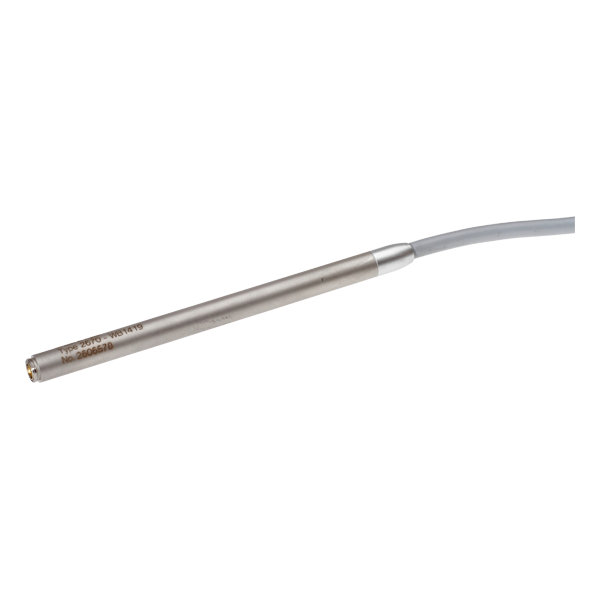 |
 |
 |
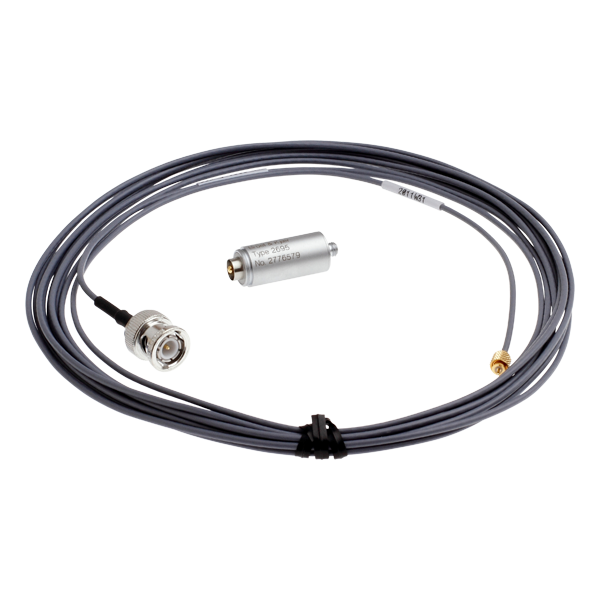 |
 |
||
| Type No. | 2670-WB-1419 | 2671 | 2673 | 2695 | 2699 | |
| Diameter | inch | 1/4 | 1/2 | 1/2 | 1/2 | 1/2 |
| Optimized | Airbag | CCLD | Calibration | Short CCLD | CCLD | |
| Connector at Preamplifier | Fixed (2 m) cable | BNC | LEMO 0B, 7‐pin | 10–32 UNF | BNC | |
| Connector at Instrument/Cable | LEMO 1B, 7‐pin | N/A | LEMO 1B, 7‐pin | N/A | N/A | |
| Calibration Facility | None | None | IVC | 10–32 UNF | BNC | |
| Polarization Voltage Support | Yes | No | Yes | No | No | |
| Supply Voltage | V | ±14 to ±60 or 28 to 120 |
28 | ±14 to ±60 or 28 to 120 |
28 | 28 |
| Max. Output Voltage (Peak) | V | 55 (10 below supply) |
7 | 55 (10 V below supply) |
7 | 7 |
| Max. Output Current (Peak) | mA | 20 | 19 | 19 | 19 | 18 |
| Frequency Range | Hz | 1 to 100000 ±1 dB (6.2 pF) |
20 to 50000 ±2 dB (12 pF) |
3 to 200000 ±0.5 dB (20 pF) |
20 to 50000 ±2 dB (15 pF) |
A‐weighted to IEC 61672 Class 1 |
| Attenuation | dB | 11 | <0.35 | <0.05 | <0.2 | 0, ±0.3 dB at 1 kHz |
| Noise A‐weighted, typical | µV | 4 | 4 | 1.8 | 4 | 8 Max., LIN |
| Noise 22.4 Hz to 300 kHz, typical | µV | 14 | 15 | 11 | 12 | N/A |
| Input Impedance | GΩ || pF | 15 || 15 | 1.5 || 0.4 | 1 || 0.05 | 1.7 || 0.4 | 10 +20 to 40% || 0.5 |
| TEDS UTID | 1025 from serial number 2264319 |
1025 from serial number 2264319 |
No | 1025 | 1025 |
WANT TO KNOW MORE?
For further details of the range, availability, and price, please use the link below to get in touch with your local Brüel & Kjær representative.

Contactez dès aujourd'hui votre interlocuteur Brüel & Kjær !


